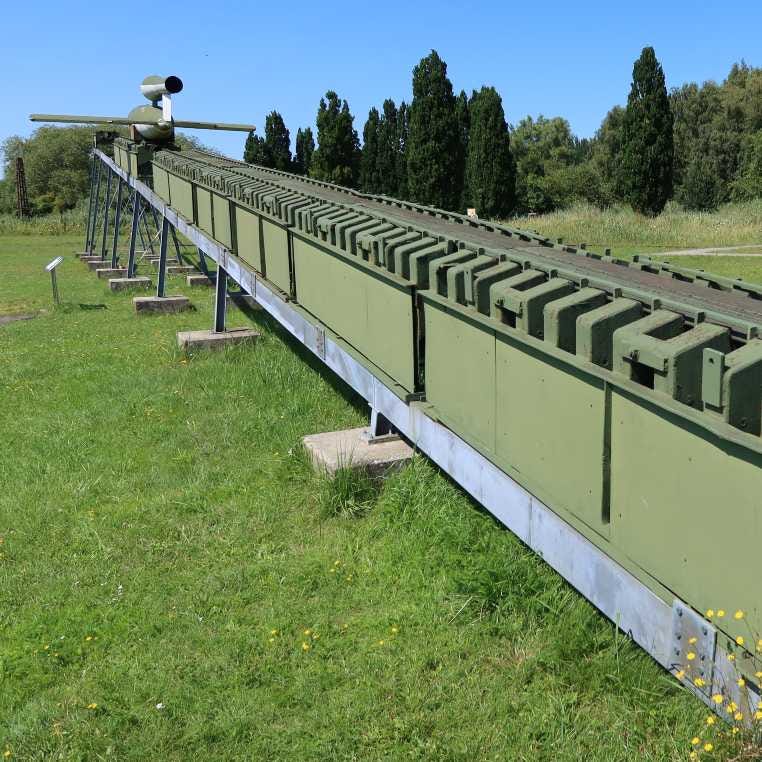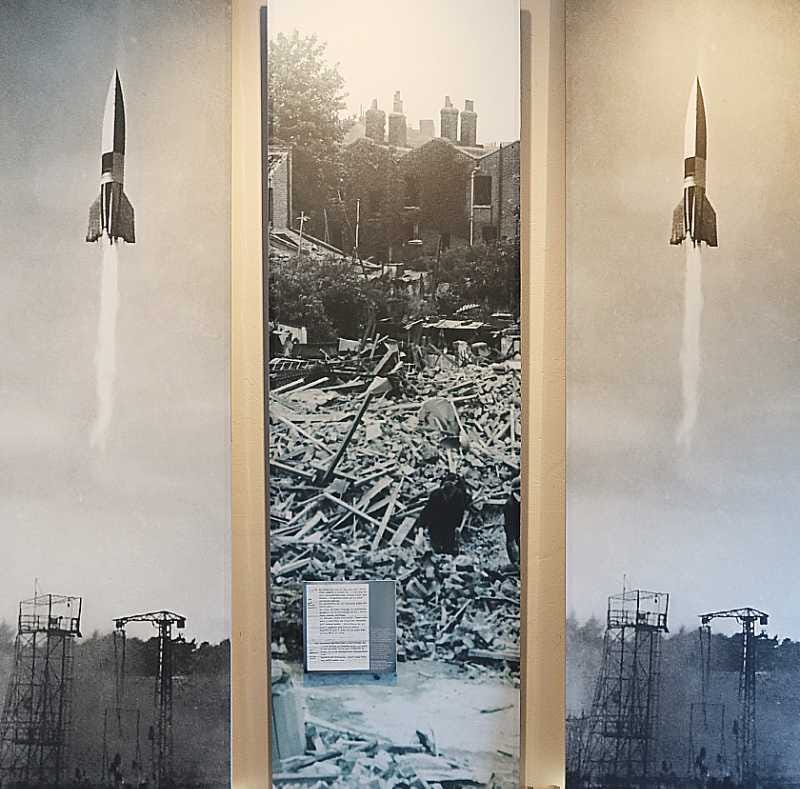From Greek Fire to Bunker-Busters: The Allure of Wonder Weapons and Humanity’s Terrible Love for War.
Among German words adopted globally, Wunderwaffe is one of the darkest—yet it perfectly captures the deep psychology behind how we talk about weapons during wartime. As we always have. As we still do.
Thus, it happens that those who have force on loan from fate, count on it too much and are destroyed. — Simone Weil, The Iliad, or the Poem of Force, 1939
The public and our civilian and military leaders are seduced by technology and its progeny, superweapons. Unfortunately, such superweapons also seduce us into thinking we are invincible. — Robert Latiff, Future Peace: Technology, Aggression, and the Rush to War, 2022
In 2004, the Jungian psychologist James Hillman wrote about humanity's "Terrible Love of War.”
War, we always say, is inhuman. Cruel. Repugnant. But Hillman saw something else. He pointed out, inhuman also means beyond human—divine, archetypal. War is like the god Mars or Ares: it possesses us, drives us, and slips beyond reason or control. Making it simultaneously terrifying and awe-inspiring. Combat veterans know this truth. They describe battle scenes as "the most hateful, most beautiful single scene I have ever known." War is somehow "thrilling, exhilarating."
War, we also say, makes no rational sense. But we aren't rational beings. And in the chaos of war, people often discover meaning, purpose, solidarity, even love—feelings so intense they haunt veterans long after the trauma fades. For many, war is where they felt most alive.
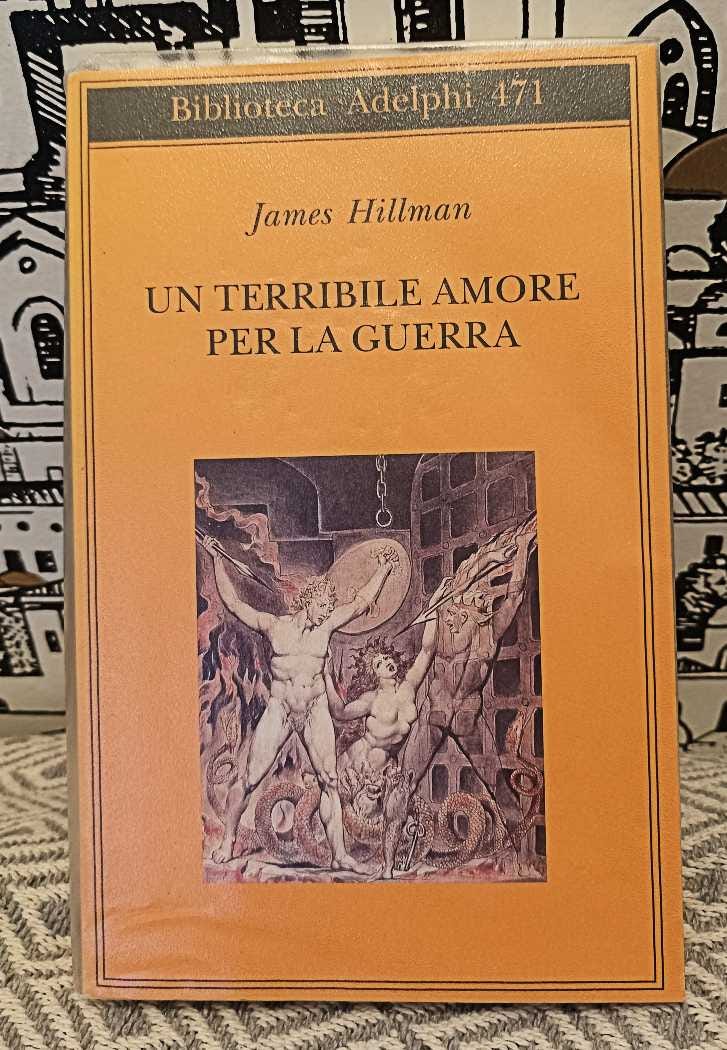
But Hillman's book missed something. He explored our love of war but not our fascination with its tools. Our wonder weapons. Our Wunderwaffen.
The Shopping List of Destruction
For more than three years now, weapon names have invaded our daily conversations. Politicians recite specifications. Media outlets overflow with technical details.
Here in Germany, the shift was unexpected. After decades of pacifism or disinterest, we now compare weapons like we’re assembling a shopping list. What should we send to Ukraine this week—Leopards? IRIS-T? Tauruses?
Remember the Leopard tank with its beer-balancing gun stabilizer? The video went viral less than two years ago. Ridiculous and mesmerizing.
Then came the drones—small, familiar, promising joystick warfare from a safe distance. Then, rising like a fetish: the Taurus missile. Everyone wants them. Putin might actually fear them. Long-range, precise, programmable. Day, night, all-weather capable. Heavy but agile.
And today's obsession? When I am writing this post, we have the latest Wunderwaffe: the American "Bunker-Busters" Missiles designed to penetrate underground fortresses. To reach what bombs couldn't reach before.
We discuss these weapons like connoisseurs. Almost none of us have held a real weapon. Yet we know their specs by heart.
The Ancient Psychology of Wonder Weapons
Why this fascination? Why now, in the post-atomic age? The answer isn't about engineering or electronics. It's something ancient. Something archetypal. Wonder weapons embody our hope for divine intervention. First it was the gods. Now it's technology. The psychology remains unchanged.
War creates existential terror. Wonder weapons promise salvation. A magic bullet to end the nightmare quickly. This is our psychological response to horror. We want it to end. But to get there, we're willing to go through even more horror.
The Wunderwaffe is the counterpart to our terrible love of war. The cure that might be worse than the disease.
This isn't a modern phenomenon. Humans have always mythologized their weapons. Ancient Greek poets sang of Achilles' divine armor. Roman legions boasted about their superior steel. Medieval knights obsessed over Damascus blades. Each generation convinced itself: "This time, we have the ultimate weapon." The technology changes. The psychology doesn't.
Before the Stone Walls of Jericho, the Wonder Weapon Was G-d
"Now Jericho was shut up inside and outside because of the people of Israel. None went out, and none came in. And the Lord said to Joshua, 'See, I have given Jericho into your hand... On the seventh day you shall march around the city seven times, and the priests shall blow the trumpets. And when they make a long blast with the ram's horn... then all the people shall shout with a great shout, and the wall of the city will fall down..." — Joshua, 6
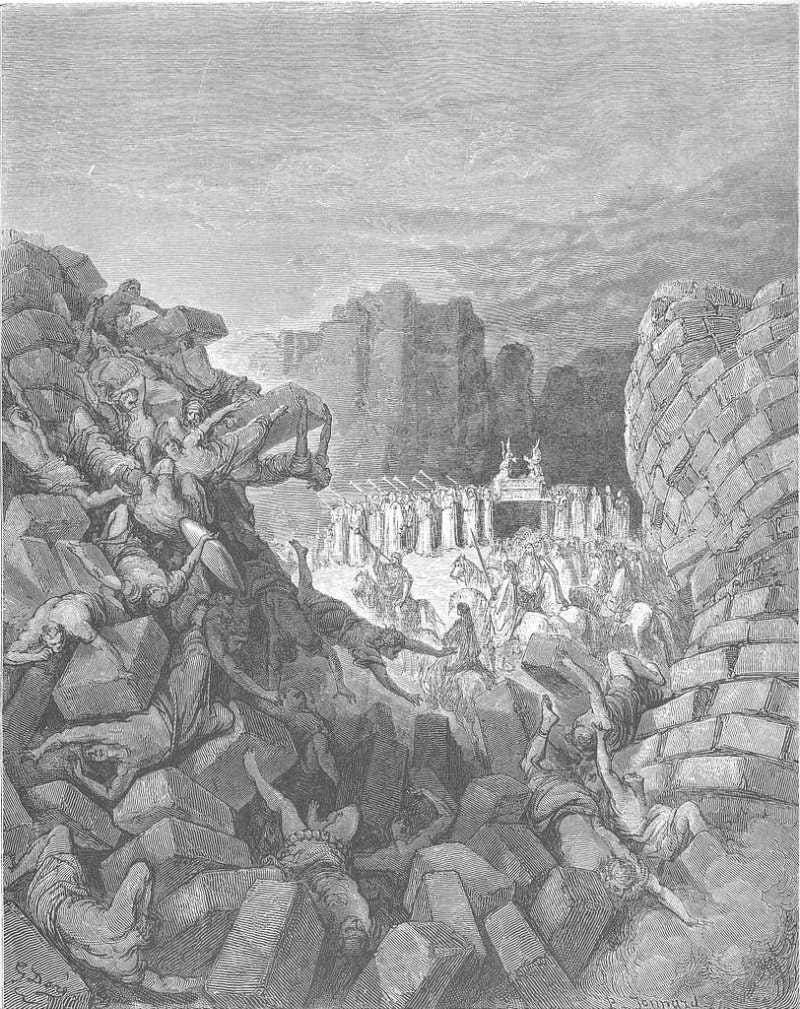
The walls of Jericho. The beginning of humanity's arms race. Beyond the biblical myth lies historical truth. By the mid-3rd millennium BCE, Mesopotamian smiths were casting copper mace heads.
It was an early glimpse of something we now take for granted: the pursuit of military advantage through better materials, better tools, better destruction. The eternal contest between offense and defense was born. For every wall, a stronger battering ram. For every new armor, a sharper blade. The cycle of innovation and counter-innovation had begun—and has never stopped.
Like today’s bunkers, the walls of Jericho were believed to be impenetrable. And like all things human-made, they weren’t.
In the biblical story, the wonder weapons were not machines—but sound. The ram’s horn. Human voices. The divine command. A miracle disguised as a tactic. In history, metallurgy was the first revolution. The ability to mold metals led to military innovation. Then came the first "chemical" weapon. The arms race had begun. It never stopped.
The Fire That Burned on Water
“At that time Kallinikos, an artificer from Heliopolis, fled to the Romans. He had devised a sea fire which ignited the Arab ships and burned them with all hands. Thus it was that the Romans returned with victory and discovered the sea fire.” — Theophanes the Confessor (8th–9th century Byzantine chronicler)
Greek Fire was antiquity's ultimate secret weapon. So secret that its precise formula remains lost to history. Even today, centuries later, that mystery feeds its legend.
The Byzantines called it "sea fire" or "liquid fire." Kallinikos of Heliopolis, a refugee chemist fleeing the Arab advance, developed it in the 7th century AD. Arab armies were hammering at Constantinople's gates. The empire needed a game-changer. Greek Fire delivered.
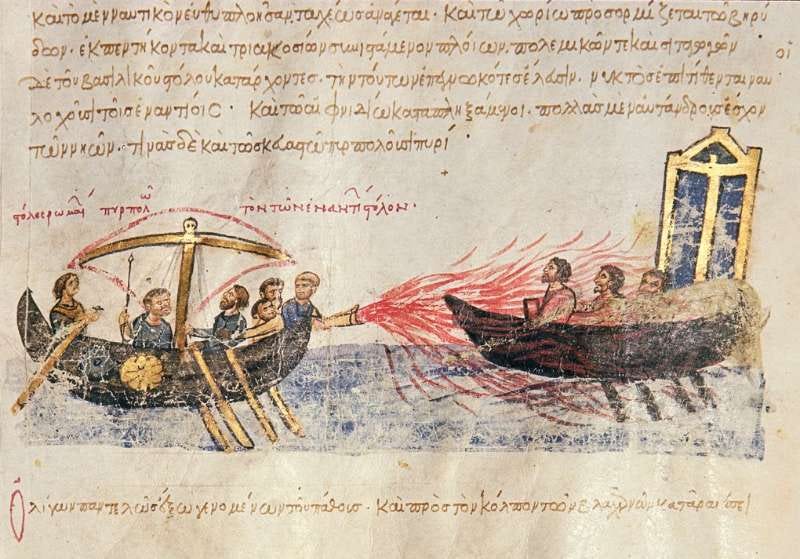
This wasn't ordinary fire. It burned on water. Imagine enemy ships approaching, confident in their numbers. Then flames erupted from the sea itself. Unstoppable. Inextinguishable. The Byzantines deployed it through ingenious devices. The siphōn—a kind of bronze flamethrower mounted on ships that sprayed liquid fire from ship prows.
But Greek Fire didn’t just destroy—it terrified.
Inextinguishable fire that raged on water triggered panic. Morale collapsed. Enemies fled. Entire fleets fell apart before even reaching the shore.
The Byzantines understood this. They used Greek Fire not just as a physical weapon but as psychological warfare. Its success was so profound that people attributed its discovery to divine intervention. Another wonder weapon. A miracle, packaged as warfare.
When Humanity Stopped Waiting for Gods
The Middle Ages changed something fundamental. Wonder weapons didn't disappear—but the wonder shifted. No more divine intervention. No more mystical fire from heaven. As human confidence grew, weapons became technological innovations. The clever inventions of military minds.
Take the longbow. Not inherently revolutionary. But it achieved legendary status through sheer devastation. Crécy, 1346. Agincourt, 1415. English longbowmen, vastly outnumbered, slaughtered French forces.
The weapon's range—up to 300 yards—rewrote the rules of medieval combat. The longbow's wonder was thoroughly human. Superior design combining flexibility and draw weight. Legally mandated training from childhood. A new social class of prestigious archers reshaping English society. Massed formations of expert bowmen. Technical precision replacing divine mystery.
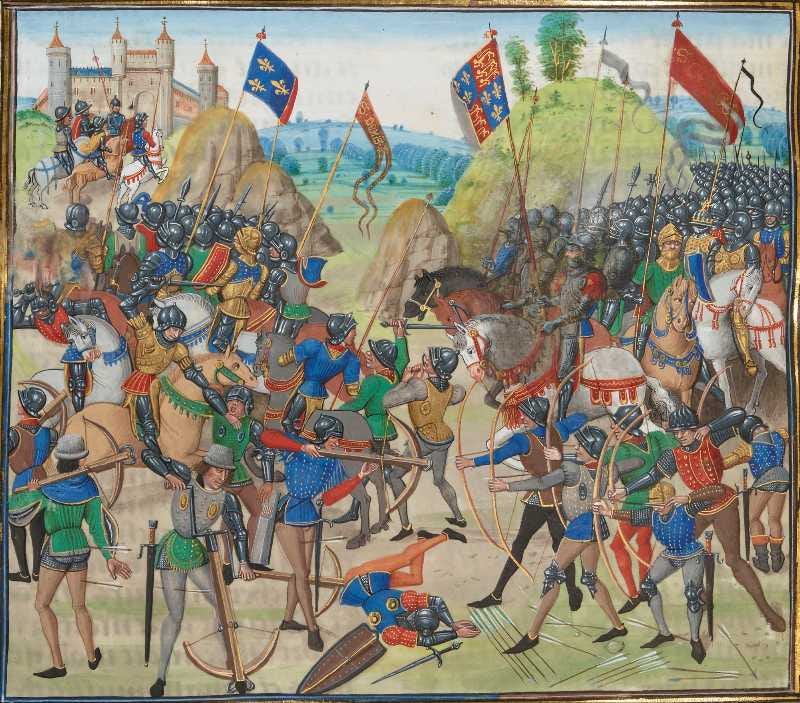
Then came something louder. Gunpowder artillery. The real watershed moment.
Constantinople fell in 1453. Medieval stone castles became obsolete overnight. Like Greek Fire, artillery created psychological impact through noise and destruction. But now, mass production was possible. Reproducibility replaced mystery. Wonder faded. The magic of war became machinery.
Not until the Nazis would we see the return of mystical wonder weapons. With them, the Wunderwaffe was reborn, inflated by propaganda and soaked in myth. Futuristic rockets promised victory through science and spectacle.
The word Wunderwaffe crystallized this terrible dream. It masked massive failure. Unfounded hope to win an unwinnable war. The awful human cost of pursuing destructive fantasies.
The Nazi “Wunderwaffen”: Propaganda, Desperation, Moral Collapse
“The English and Americans are now counting on our collapse in the summer. But they are in for a surprise. We are working on new weapons, which will have a tremendous effect. When they are introduced, the situation will change overnight.”
“We are now at the point where we must make the enemy believe in the existence of secret weapons, even if we ourselves do not yet have them in sufficient numbers.”
“The entire nation is waiting for the promised miracle weapons. Their effect will be enormous, not only militarily but also psychologically. We must continue to nourish these hopes.” — The Goebbels Diaries, 1942–1943
After the defeat at Stalingrad in February 1943, the war was effectively lost for Nazi Germany. When the Allies landed in Normandy in June 1944, the writing was on the wall. The Third Reich needed a miracle—something that could reverse the tide of history.
They looked to science.
And they turned to myth.
To a rocket dream.
The dream of new missile systems had started much earlier. In the early 1930s, under Wehrmacht Captain Walter Dornberger and rocket enthusiast Wernher von Braun, Germany launched its secret rocket program. In 1937, they built a base at Peenemünde, on the Baltic Sea island of Usedom. It became the heart of Nazi rocketry.

The investment was massive. At least $2 billion in 1944 dollars. Peenemünde-Ost alone cost 300 million Reichmarks.
Desperation accelerated everything in 1943. By 1944, Nazi propaganda made these "wonder weapons" central to their narrative. Terror British civilians. Undermine enemy morale. Give Germans false hope for vengeance.
V for Vengeance
The V-1 "flying bomb" debuted against London in June 1944. Families fled the city. Children evacuated en masse. Goebbels claimed these weapons struck "paralyzing fear" into English hearts. He hinted at even more impressive weapons to come.
He was talking about the V-2—the world’s first long-range, guided ballistic missile.
The V-2 was genuinely revolutionary. The world's first long-range guided ballistic missile. An unprecedented fusion of scientific innovation and destructive capability. Fourteen meters tall. Thirteen tons fully fueled. Liquid-fuel engine propelling it to the edge of space at Mach 4.
Launched from mobile platforms hidden in forests. Flexible. Hard to detect. September 1944: first combat launches against Paris and London. Later targeting Britain, Belgium, the Netherlands. The V-2 arrived supersonically. No warning. No defense possible with 1944 technology. You heard it only after impact. One-ton warhead. Massive craters. Significant destruction.
From September 1944 to March 1945, Nazi Germany launched over 3,000 V-2 rockets. In Britain and Belgium alone, these weapons killed more than 15,000 people and wounded over 47,000.
It was Joseph Goebbels who popularized the term Wunderwaffe—“wonder weapon.” The Nazi press preferred Vergeltungswaffe, “weapon of vengeance,” to cast it as a justified response to Allied bombing.
“V 2 is not a terror weapon”
“When England rejected the proposed respect for air warfare against open cities, when the enemy air force boasted of its murderous successes and when even English bishops blessed the bomb that rose to terrorize the German countryside far behind the front lines, they may not have believed that German technology would succeed in creating a suitable retaliatory weapon with such a thorough effect. Not Germany, but the enemy powers had initiated this form of air warfare.”
DzB Berlin long distance radio service, November 16 1944.
The hypocrisy was staggering. But the propaganda worked—at least initially. News articles from late 1944 promised invulnerability and relentless fire.
“The V-2 weapon practically invulnerable”
“The day when the commander responsible for the V-2 fire could report the 1000th launch to the Reich Minister for Armaments and War Production, Albert Speer, is long past. Many targets have been set in advance work, so that the V-2 fire on England will continue relentlessly and the world will one day be able to convince itself of the effect of this new German long-range weapon.”
Berlin, December 23 1944.
But inside Germany, expectations collapsed when the rockets failed to deliver the promised victory. The “wonder weapon” became a symbol of empty hope.
The Horrific Price of Wonder.
The V-2's real horror wasn't its impact on enemy cities. It was how it was built. As Allied bombing intensified, rocket production moved underground. The Mittelbau-Dora subcamp of Buchenwald provided forced labor. Twenty-four hours a day. Seven days a week. They lived and died in damp, freezing tunnels. Food was scarce. Disease was rampant. Sabotage was punished with public hangings.
Over 20,000 people died building the V-2 rockets—more than the number of people killed by the rockets themselves.
The Wunderwaffe epitomized Nazi divorce from military reality and ethical consideration. Its "wonder" was actually strategic, military, and moral bankruptcy. What came after—in August 1945, across the world in Japan—would be worse. But it would also silence the word wonder in the context of war, at least for some time.

The Weapon That Broke the Wonder
August 1945. Hiroshima. Nagasaki. The atomic bomb marked an unparalleled moment in military history. Destructive power beyond any conventional weapon previously conceived.
In one blinding flash, the era of Wunderwaffen—of “wonder weapons”—was over. The very word fell silent, made obscene by the reality of nuclear destruction.
Historically, so-called wonder weapons had promised rapid success and decisive victory. The unprecedented scale of destruction led strategists to a chilling conclusion: traditional military victory was impossible. In a full-scale nuclear exchange, there would be no winners.
Out of this came a new doctrine—cold, logical, and terrifying: Mutual Assured Destruction, or MAD.
The theory was simple: if two nuclear-armed states went to war, both would be destroyed. Total annihilation would be the outcome of any full-scale nuclear exchange. Victory would mean nothing. Only ruin. This logic made large-scale war between superpowers unthinkable. Peace, if it came, came not from diplomacy or morality—but from fear. From the certainty that no one could win.
The atomic bomb ironically fulfilled humanity's long-standing aspiration. It made large-scale conflict between nuclear powers unthinkable. War had become too terrible even for our terrible love of war.
Or so we thought.
But instead of peace, it brought paralysis. Not a world without war—but a world where war had to take new forms. And so, beneath the threshold of nuclear exchange, in the long shadow of the Cold War, the dream of wonder weapons came back.
Smaller. Faster. Smarter. Still terrible. Because our love of war—terrible as it is—did not end. And technology took care of the rest.
Smaller. Faster. Smarter. The Persistent Quest for “Miracle Weapons”
Decade after decade, year after year, the dream of the Wunderwaffe never really died. n the 1980s, it returned under a new name: “Star Wars”—President Reagan’s grand plan to shoot down enemy missiles from space. Cinematic. Futuristic. Unrealistic.
Since then, we’ve grown used to less dramatic, more high-tech terms.
Precision-Guided Munitions, or PGMs. Weapons that promise pinpoint accuracy. “Smart bombs” designed to avoid civilian casualties. Strikes we call “surgical.” But speak to a real surgeon in a war zone—and they’ll tell you what “surgical” really looks like. We don’t call them “expensive explosives with GPS.” We call them “precision weapons.” It’s the language of marketing.
And today’s marketing darling? Drones.
The war in Ukraine is often described as the world’s first “drone war.” We hesitate to call them wonder weapons—perhaps because they’re small, and our minds still associate wonder with something big, loud, and heavy. But drones are changing everything. On land, in the sky, under the sea—they provide real-time battlefield awareness, autonomous targeting, and precision strike capacity.
And the more autonomous they become, the more pressing the question: What happens when machines decide who and when to kill? No one knows.
Meanwhile, some weapons still flatter our ancient fantasies. Take the German Taurus missile—perhaps because it’s German, it feels like a true heir to the Wunderwaffe myth.
The Taurus KEPD 350 is a long-range cruise missile—stealthy, precise, powerful. It can fly high or low. It can delay detonation until it penetrates the ideal depth. Experts call it the best Western system for taking down fortified bridges.
And yes—we’re all thinking of one bridge in the Black Sea. But even the Taurus, for all its brilliance, won’t change the course of a war alone. The wonder, once again, must wait.
Still, a new “wonder weapon” is always waiting in the wings. Take the GBU-57A/B MOP—Media name: "Bunker-Buster." It was already used in 2003 in Iraq. Not a good omen.
It can penetrate up to 60 meters of reinforced concrete. It’s massive. Powerful. Precise. And yet—The wonder has limits. Only the B-2 Spirit can carry it. Just two units per bomber. Stockpile limited to a few dozen bombs. Even the “perfect” weapon runs into human, logistical, and ethical limits.
We dream of war without blood.
Clean, decisive, one-click war.
But reality always pushes back.
Writing this from Germany, I found strange honesty in Chancellor Merz’s interview on ARD, when he described Israel’s recent actions as:
“Die Drecksarbeit, die Israel für uns alle macht.” (The dirty work, that Israel does for all of us.) — Friedrich Merz, 18 June 2025
Not elegant. But honest. And maybe that’s what we need more of. More honesty when we talk about wars. More honesty when we mention “smart” weapons. More truth about what they do—and what they don’t.
History offers harsh lessons. Wonder weapons rarely live up to their promise.
The machine gun was supposed to make war so horrible that nations would stop fighting. Instead, it gave us World War I. Nuclear weapons were meant to end large-scale conflicts. Instead, they created decades of proxy wars. Precision bombing was going to minimize civilian casualties. It didn't.
Behind every Wunderwaffe lies the same assumption: That violence can be perfected. That with the right code, the right machine, the right strike—we can make war clean. Quick. Justified.
This faith in technological solutions blinds us to war's fundamental nature. War remains what it has always been: Human. Brutal. And dirty.
Like our faith in God as a weapon in biblical times, it misses the point entirely. Treaties end wars. Diplomacy ends wars. Exhaustion ends wars. Sometimes, unfortunately, total victory ends wars. Then a new cycle begins. New dreams of wonder weapons.
Unless we choose the real wonder.
The wonder is in choosing not to use it.




